-
 +23 +4
+23 +4How the Sun Will Die
very day, when you wake up, the Sun is there to greet you and wish you a good morning. True, sometimes it’s hidden behind some meddling clouds, but you still know it’s there. It cares for you. Most people prefer the days when the Sun shines upon us without any atmospheric interferences. All people love the warmth and heat it provides. It makes life possible and it makes life worth living (imagine living in an ever-dark Blade Runner-Cyberpunk dystopia — depression would be very, very common). But, what the Sun gives it can also take away.
-
 +4 +1
+4 +1How the Brain Reacts When Faced With Survival Risk
Microscopic roundworms may hold the key to understanding what is happening in the brain when the instinct of an animal changes in order to survive. In a newly published paper in the journal Current Biology University of Rochester Medical Center researchers found that a signaling system in the brain changes to redirect the behavior of an animal when their survival is at risk because there is not enough food.
-
 +14 +1
+14 +1Neutron stars release warm winds as they devour companion stars
Neutron stars release powerful warm winds after chowing down on their stellar companions, new research shows. Neutron stars are the remains of more massive stars that reached the end of their lives and exploded in violent supernovas, leaving behind a dense core that continues to collapse in on itself. These stellar corpses are the densest known objects in the universe, aside from black holes, which form when even larger stars die.
-
 +23 +6
+23 +6Everything You See Is From 15 Seconds in the Past, New Research Claims
Open the camera app on your phone and start recording a video. Place the screen right in front of your eyes and try to use the live footage as a viewfinder. Tricky, right? The shapes, colors, and motion in the video are jarring. Scientists say this exercise is a close approximation of the messy visual data that our eyes constantly bombard our brain with. So how exactly do we see without feeling dizzy or nauseated?
-
 +13 +2
+13 +2What happened before the Big Bang?
In the beginning, there was an infinitely dense, tiny ball of matter. Then, it all went bang, giving rise to the atoms, molecules, stars and galaxies we see today. Or at least, that's what we've been told by physicists for the past several decades.
-
 +11 +4
+11 +4Amateur sleuths help solve 160-year mystery by decoding Charles Dickens letter
Last October, a collaboration called The Dickens Code project made a public appeal to amateur puzzle fans and codebreakers for assistance in decoding a letter written by Victorian novelist Charles Dickens in a tortuously idiosyncratic style of shorthand. The crowd-sourced effort helped scholars piece together about three-quarters of the transcript. Shane Baggs, a computer technical support specialist from San Jose, California, won the overall contest, while a college student at the University of Virginia named Ken Cox was declared the runner-up.
-
 +15 +1
+15 +1'The new heart is still a rock star': Man doing well after receiving first heart from gene-edited pig
Dave Bennett, the Maryland man who received the first heart transplant from a genetically modified pig last week, continues to recover well, his doctors said late Wednesday. "The new heart is still a rock star," said Dr. Bartley Griffith, who led the transplant team at the University of Maryland Medical Center. "It seems to be reasonably happy in its new host … It has more than exceeded our expectations."
-
 +18 +3
+18 +3U.S. man recovering after 'breakthrough' pig-heart transplant
A U.S. man with terminal heart disease was implanted with a genetically modified pig heart in a first-of-its-kind surgery, and three days later the patient is doing well, his doctors reported on Monday.
-
 +4 +1
+4 +1Can cats smile? Yes — but they use their eyes to do it, study discovers
Researchers say humans can appear more attractive to cats by smiling back — with a “slow blink.” Just like with people, a friendly smile can go a long way to winning over a cat. Researchers in the United Kingdom say they’ve “purr-fected” the art of communicating with our four-legged friends.
-
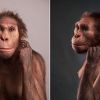 +12 +5
+12 +5New Fossil Shows Ancient Human Relative "Walked Like Humans And Climbed Like Apes"
An international team of scientists from New York University, the University of the Witwatersrand and 15 other institutions announced today in the open-access journal eLife the discovery of ...
-
 +18 +4
+18 +4Can lucid dreaming help us understand consciousness?
The ability to control our dreams is a skill that more of us are seeking to acquire for sheer pleasure. But if taken seriously, scientists believe it could unlock new secrets of the mind.
-
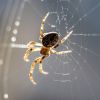 +15 +2
+15 +2Spider Uses its Web Like a Giant Engineered Ear
Bridge spiders "outsource" their hearing by building webs that double as acoustic arrays, allowing them to perceive sounds from great distances.
-
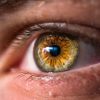 +16 +2
+16 +2More than light detectors: the magic of your eyes' pupils
The mechanisms we use to sense quantity are located in our pupils. This is the result of a study conducted by the School of Psychology of the University of Sydney, in collaboration with the Universities of Pisa and Florence (Italy), recently published in Nature Communications.
-
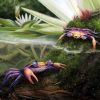 +17 +3
+17 +3Trapped in amber: Fossilized dinosaur-era crab bridges evolutionary gap
Discovery pushes back when crabs came to land, freshwater to 100 million years ago.
-
 +14 +3
+14 +3Astronomers see white dwarf 'switch on and off' for first time
Astronomers have used a planet-hunting satellite to see a white dwarf abruptly switching on and off for the first time. The researchers led by Durham University, UK, used NASA's Transiting Exoplanet Survey Satellite (TESS) to observe the unique phenomenon.
-
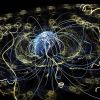 +18 +5
+18 +5Unifying models of chorus wave frequency chirping
Whistler mode chorus waves are electromagnetic emissions common in planetary magnetospheres. Among other impacts, their scattering of magnetospheric electrons is one driver for the formation of auroras. An important attribute of these waves is frequency chirping, in which the frequency of the emission rises or falls nearly monotonically with time.
-
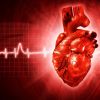 +16 +4
+16 +4Radiation to the heart corrects arrhythmia by reactivating younger state
Scientists at the Washington University School of Medicine have made an intriguing discovery that could see radiation therapy become a less invasive treatment for heart arrhythmia. The technique seems to activate the heart cells to revert to a younger state and repair the tissue.
-
 +17 +4
+17 +4Little kids burn so much energy, they’re like a different species, study finds
In the most comprehensive analysis of its kind, scientists find stark differences between children and adults
-
 +16 +3
+16 +3Soft robot chameleon changes color in real-time to match background
A team of researchers working at Seoul National University has developed a soft robot chameleon that can change its colors in real time to match its background. In their paper published in the journal Nature Communications, the group describes their multi-layer skin design and possible uses for it.
-
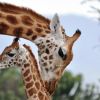 +22 +2
+22 +2Giraffes May Be as Socially Complex as Chimps and Elephants
Giraffes seem above it all. They float over the savanna like two-story ascetics, peering down at the fray from behind those long lashes. For decades, many biologists thought giraffes extended this treatment to their peers as well, with one popular wildlife guide calling them “aloof” and capable of only “the most casual” associations.
Submit a link
Start a discussion




















